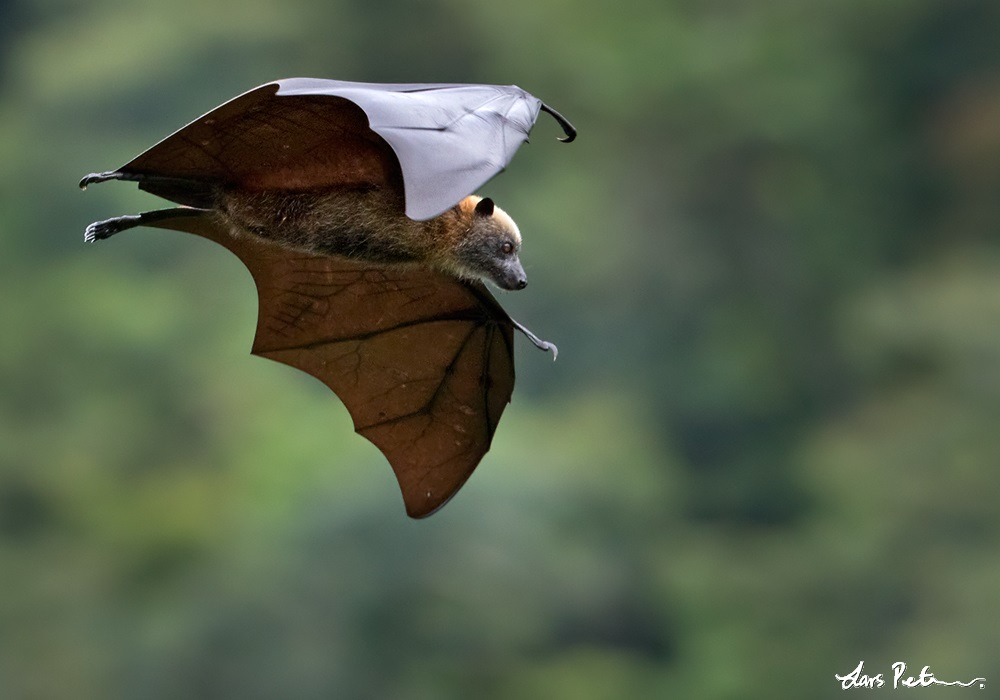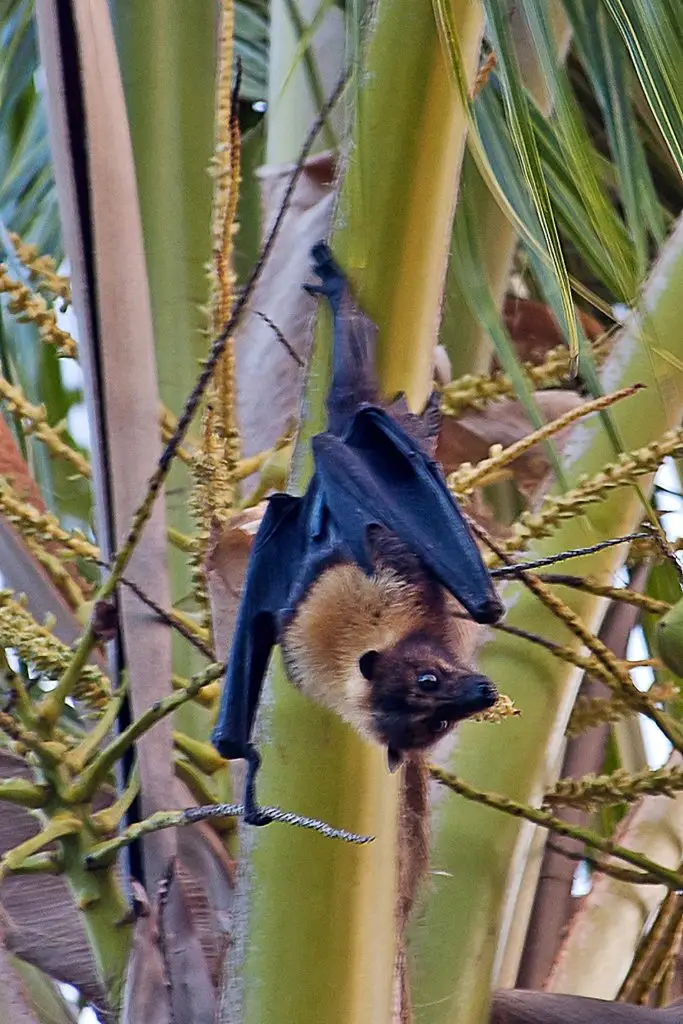Did you know that there are at least 60 species of flying fox? Named for their distinctively dog- or fox-shaped faces, flying foxes all belong to the genus Pteropus (which comes from Greek for “wing foot”). Approximately half of the world’s flying foxes are considered threatened, including this week’s Bat of the Week: the Samoan flying fox.

Samoan Flying Foxes (Pteropus samoensis samoensis) are found only on the islands of the Samoan archipelago. Like most species of flying fox, they specialize on fruit and nectar. Unlike most other bats though, they are consistently active during the day!
They are most active in the early mornings and late afternoons, feeding on fruit and defending foraging territories. They also take advantage of daytime thermals, using the warm columns of rising air to soar through the air and save energy.
The Samoan subspecies is considered Endangered under the United States Endangered Species Act. IUCN categorizes these bats are ‘Near Threatened’, combining subspecies populations from Samoa, Fiji and American Samoa. Main threats were hunting and habitat loss.
Samoan legends and folklore frequently include the Samoan Flying Fox, often as heroes associated with fertility and survival. This represents a strong cultural understanding of these bats’ important roles as pollinators and seed dispersers on the islands.

Literature Cited:
Scanlon, A., Brooke, A. & Wiles, G. 2020. Pteropus samoensis. The IUCN Red List of Threatened Species 2020: e.T18757A22087415. https://dx.doi.org/10.2305/IUCN.UK.2020-2.RLTS.T18757A22087415.en
Banack, S. A. (2001). Pteropus samoensis. Mammalian Species, 2001(661), 1-4.
Thomson, S. C., Brooke, A. P., & Speakman, J. R. (2002). Soaring behaviour in the Samoan flying fox (Pteropus samoensis). Journal of Zoology, 256(1), 55-62.
Sinavaiana, C., & Enright, J. (1992, July). The cultural significance of the flying fox in Samoa: a legendary view. In Proceeding of an international conservation conference on Pacific Island flying foxes. US Fish and Wildlife Service Biological Report (Vol. 90, pp. 36-38).